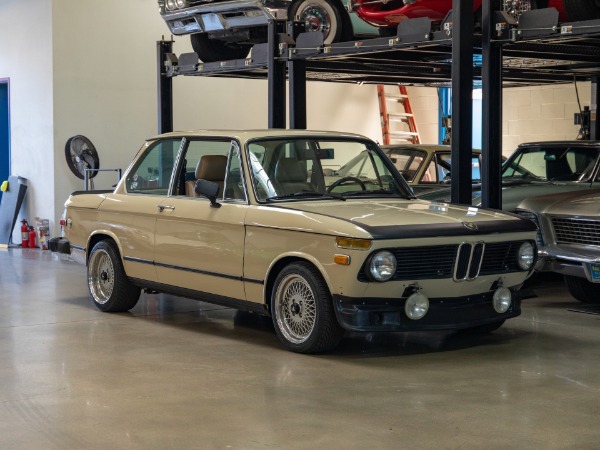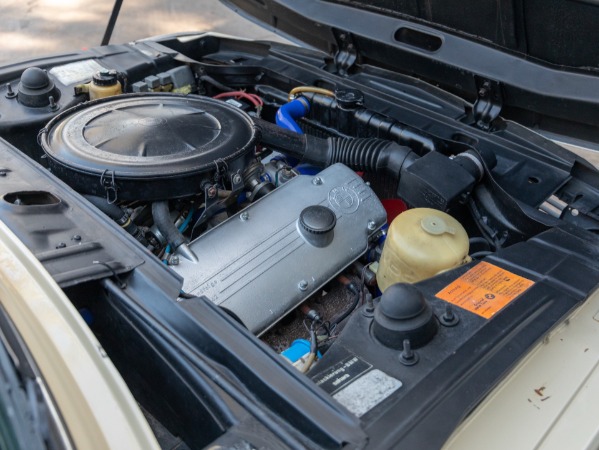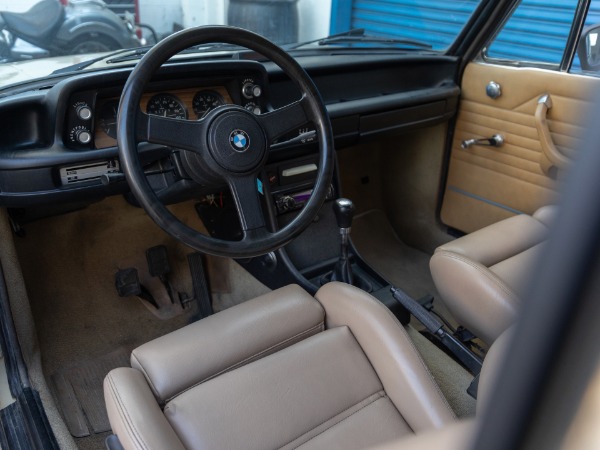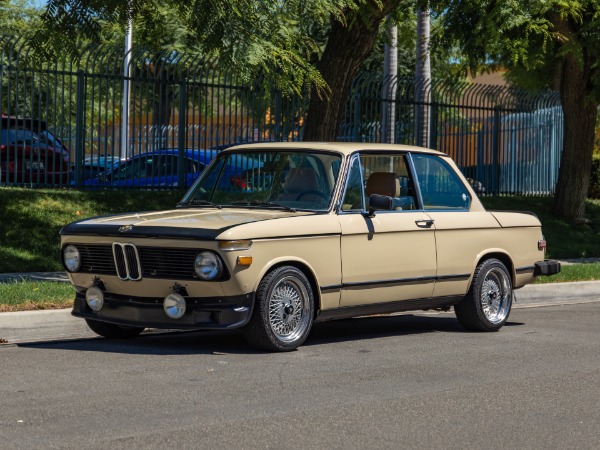The 1974 BMW 2002: An Epoch in Automotive Evolution
The 1970s, often painted as a period of bohemian freedom and artistic exploration, also bore witness to some pivotal automotive innovations. Nestled prominently in this dynamic decade was the 1974 BMW 2002, a vehicle that not only exemplified engineering prowess but also became a cultural emblem of its time.
The 1974 BMW 2002: A Defining Moment in Production History
The BMW 2002 is, without a doubt, one of the most iconic vehicles ever produced by the Bavarian Motor Works company. For the uninitiated, the ’02’ might seem like just another model number, but for automotive enthusiasts, it encapsulates a golden era of design, engineering, and brand philosophy. The 1974 version of the 2002 is a particularly shining star in this lineup, and its production story is a testament to BMW’s commitment to innovation and quality.
Enter the 2002:
The 2002 was born when BMW decided to fit a 2.0-liter engine from their larger sedans into the compact 1602. The initial versions of the 2002 rolled off the production line in 1968. This model quickly gained popularity, thanks to its perfect blend of size, power, and handling.

The 1974 Iteration:
By the time 1974 rolled around, the BMW 2002 had already seen various versions, including the tii, which featured a fuel-injected engine. The 1974 model was part of the series that ran from 1971 to 1976. This series saw significant changes, including:
- A New Look: The 1974 2002 had a revamped front, which replaced the earlier round taillights with square ones. This change is a defining feature, making the later models distinguishable at a glance.
- Safety and Emissions: The U.S. market 2002s for 1974 got larger bumpers to meet new safety regulations. Alongside, modifications were done to meet stricter emission standards without sacrificing too much power.
- Interior Comforts: The interiors were slightly updated, making them more comfortable and more in line with what consumers in the 1970s expected from a premium car. Improvements in noise insulation, upgraded materials, and an improved dashboard layout made the car feel more refined.
Production Process and Challenges:
The 1974 BMW 2002 faced challenges, particularly for the American market. Emission regulations were getting stricter, leading BMW to make adjustments to the engine and exhaust system. While European models could still enjoy the high compression engines, the U.S. versions were detuned. However, BMW was determined not to compromise on the car’s inherent driving pleasure.
BMW’s production facility in Munich was buzzing with activity during this period. The assembly line for the 2002 was a mix of manual labor and semi-automated processes. Each vehicle underwent rigorous quality checks, embodying the German ethos of precision engineering.
Performance Nuances
The 1974 BMW 2002, beneath its elegant facade, housed a robust 2.0-liter four-cylinder engine. This beastly heart, capable of churning out 100 hp, was paired with a manual 4-speed transmission. This configuration ensured drivers could genuinely connect with the road, feel every shift, every acceleration, and experience driving in its purest form.
Further enhancing its dynamism was the car’s balanced weight distribution and rear-wheel drive. This allowed for nimble cornering, making the 2002 not just a commuter vehicle but a true driver’s car.

Cultural Significance and Cinematic Presence
Few vehicles can boast of a legacy that permeates beyond automotive circles. The 2002, with its blend of performance and elegance, became an emblem of the 1970s zeitgeist. Its influence wasn’t limited to highways or racetracks; it graced films, inspiring filmmakers with its design and performance. Musicians sang praises, literally, embedding the car into the very fabric of pop culture.
OUR 1974 BMW 2002 FOR SALE
‘We’re thrilled to showcase this impeccably preserved Southern California gem: the 1974 BMW 2002 2 Door Sports Sedan, complete with a 4-speed manual transmission. A testament to meticulous care, this vehicle boasts a rust-free body and a clean history, devoid of any accidents. Its recent comprehensive mechanical overhaul includes a rebored engine fitted with a new timing chain, ensuring this iconic 2002 model remains a hot commodity in international classic car circles.
The BMW 2002, revered for its exceptional performance between 1972-74, revolutionized the automotive industry. It blended the practicality of a four-seater compact with a touch of sportiness and class. Paired with BMW’s renowned engineering prowess and impeccable craftsmanship, the 2002 quickly resonated with car enthusiasts globally. The vehicle’s interiors epitomized a no-nonsense aesthetic: a black dashboard, a strategically designed three-spoke steering wheel emphasizing vital gauges, and manual windows. True to its sports car lineage, it skipped on luxuries like radios, power steering, door locks, cruise control, and airbags.
This specific beauty stands out, particularly with its ’74-exclusive front bumper having been tastefully removed and its inclusion of plush Recaro bucket sports seats. Dressed in an elegant ‘Cream’ hue—repainted to perfection—its interiors flaunt captivating Tan ‘Recaro’ sports seats. The car’s body is pristine, showing no evidence of past accidents, damages, or rust. A minor note: there’s slight wear on the driver’s seat bolster and a minuscule crack on the dashboard.
Behind the wheel, the driving experience is pure BMW. With over $8K poured into its recent service, including the engine refurbishment, its performance is unmatched. The robust 2.0-litre engine purrs with vigor, while the manual transmission effortlessly glides through gears, ensuring a smooth ride that remains cool under any condition. This vehicle isn’t just an acquisition; it’s an experience awaiting its next fortunate custodian.’
The 1974 BMW 2002 and its Impact on Motorsports
The 1974 BMW 2002 occupies a unique position in the motorsports universe, particularly in the realm of touring car racing and rallying. Let’s delve deeper into its role and achievements on the track and dirt.
The Scene in the Early 1970s: The early 1970s saw a surge in touring car racing. With smaller, more nimble vehicles entering the fray, the stage was ripe for innovation. The BMW 2002 arrived at this crucial juncture, presenting an alternative to the larger displacement vehicles that had dominated circuits.
Foundations of the Legend: The BMW 2002’s journey in motorsports began even before 1974, with the earlier models of the 2002 gaining recognition. But 1974 was a defining year. The 2002 model of this year benefited from a culmination of refinements over its predecessors. It had a stiffer chassis, better weight distribution, and a more potent engine. These elements combined made it a formidable presence on the track.
Touring Car Racing:
In touring car races, the BMW 2002 often found itself pitted against mightier foes, in terms of displacement and power. However, it made up for it with nimble handling, agility, and the ability to maintain higher average speeds on winding tracks. In several races in the U.S. and Europe, the 2002 left behind competitors, earning a reputation as the “giant killer.”
Rallying:
Beyond the tarmac of touring car circuits, the BMW 2002 made its mark on the grueling terrains of rally tracks. The robust build of the car, combined with its compact size, made it ideal for the punishing conditions of rallying. Notably, the 1974 BMW 2002 saw participation in events across Europe, often finishing in respectable positions, further solidifying its reputation.
Drivers and Teams:
Behind the wheel of these machines were some iconic drivers. Teams running the 2002 included stalwarts like Alpina and Schnitzer. These teams pushed the 2002 to its limits, often modifying the engine, suspension, and aerodynamics to extract every ounce of performance. Such was the impact of these teams and drivers that they contributed significantly to BMW’s decision to delve deeper into motorsports, leading to the development of BMW’s M division.

SELLING A 1974 BMW 2002?
Legacy and Impact
As years turned to decades, many cars faded into obscurity, but the 1974 BMW 2002’s influence only grew stronger. It paved the way for successors, most notably the BMW 3 Series, ensuring the brand’s ethos of merging pleasure with performance lived on.
Today, for many automotive aficionados, the 2002 isn’t just a car; it’s a chapter in automotive history, a testament to an era where engineering and design converged to create something truly timeless.
In wrapping up this exploration, the 1974 BMW 2002 stands as a beacon of what automobiles can achieve, transcending utility to become cultural landmarks, and in the process, etching their names indelibly into the annals of history.

